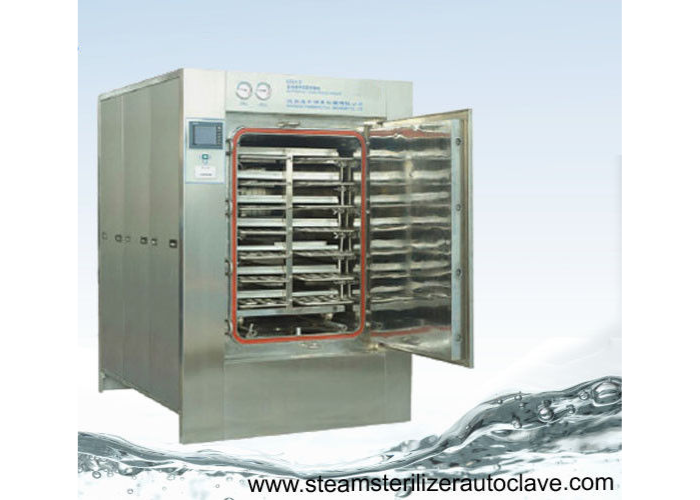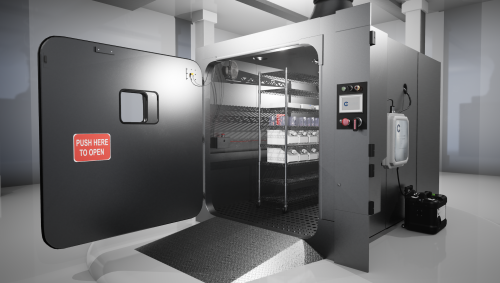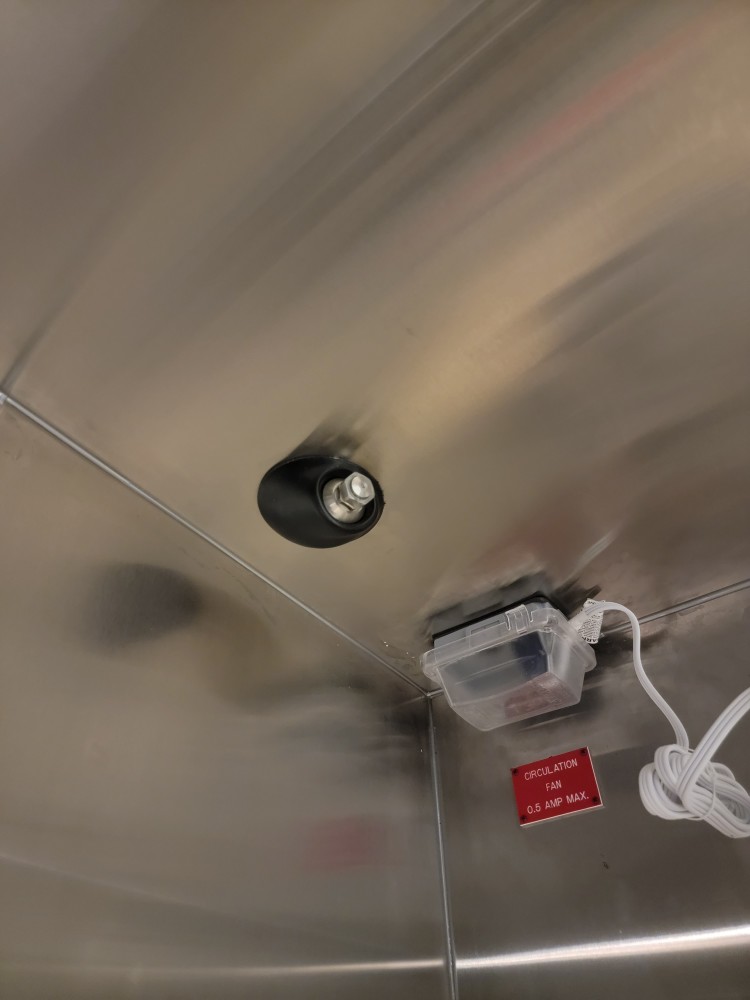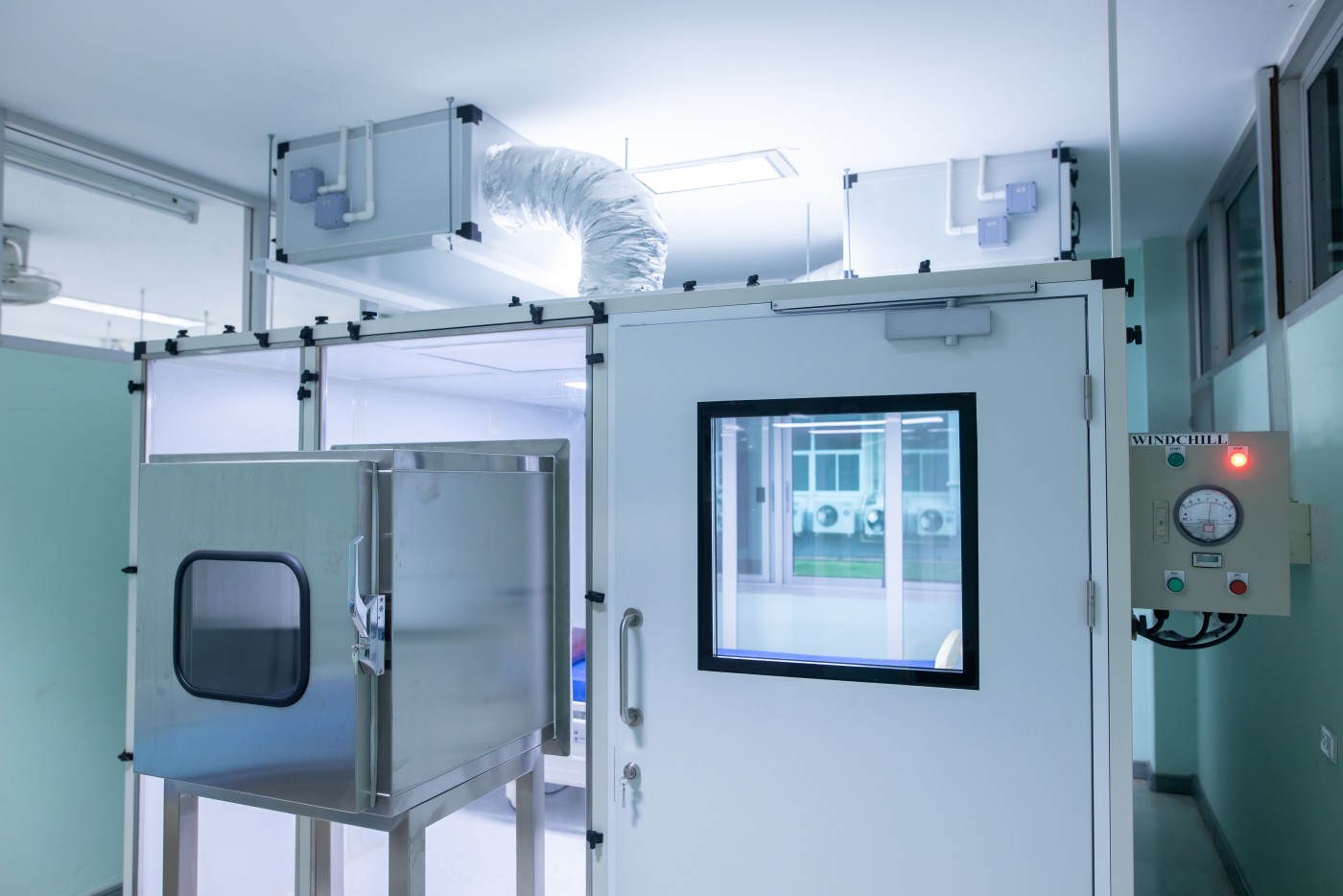Improving Decontamination for Material Transfer Spaces
A materials transfer protocol is an essential process of a containment laboratory and or cleanroom environment where the required movement of materials from one classified space to another is performed safely* and efficiently without contaminating the product and/or the transferred space. Decontamination of materials takes place as they are being transferred between classified rooms—whether in or out of a cleanroom or in/out of a containment facility. Cleanrooms are set up to transfer materials along a gradient of increasing cleanliness, from “dirtier” to “cleaner” spaces. In the United States, cleanrooms are labeled in order of decreasing cleanliness from ISO1 through ISO9[1]. Alternatively, in Europe, cleanrooms are ranked from Grade A to Grade D, also in order of decreasing cleanliness levels[2].
By paying close attention to materials transfer, researchers and other personnel can be sure that no contaminants enter a cleanroom where they’re not supposed to be and, conversely, that no dangerous pathogens escape from high-containment labs. However, not all materials transfer programs are created equal. Traditionally, the double door pass through autoclave was seen as the standard for decontaminating tools, instruments, and materials before bringing them into a clean room or out of a high containment lab[3]. However, materials that are sensitive to heat and moisture cannot be placed in a steam autoclave for decontamination. For these materials, hydrogen peroxide vapor can be used to decontaminate the materials safely, faster and without material compatibility challenges. CURIS systems provide a safe and effective alternative for decontamination of heat and moisture sensitive materials in the form of hybrid hydrogen peroxide (HHP™) decontamination.

Sites of Material Transfer
Isolators
The environment inside an isolator provides a sterile space, while also maintaining containment. Isolators are used in many applications, from fill-finish drug manufacturing to research with select agents, or for breeding germ-free animal models. Isolators are completely sealed off from the outside world, with researchers passing materials through a sterile portal and placing their hands into gloves sealed into the isolator in order to manipulate the materials/objects inside the isolator. The most efficient and reliable way to clean an isolator is with a decontamination unit that can be integrated into the isolator directly, such as the CURIS 7000ei. Multiple isolators and closed systems in animal life science, university research, Pharma, and healthcare are enjoying effective decontamination with CURIS System.
Transfer Chambers
Transfer chambers have a built-in decontamination cycle for the items that are placed inside. Once the items are placed in the chamber and the doors are sealed, hydrogen peroxide vapor can be circulated throughout the chamber to kill microorganisms that are present. 
 These pass-through chambers can come in different sizes depending upon the material size and throughput requirements. For high throughput scenarios, the material transfer space can be a room configured with interlocking pass through doors and appropriate sealing mechanisms creating an efficacious decontamination environment. For small materials, a pass-through box is typical. Laboratories and vivariums around the globe trust CURIS as their choice method for decontamination of material transfer chambers.
These pass-through chambers can come in different sizes depending upon the material size and throughput requirements. For high throughput scenarios, the material transfer space can be a room configured with interlocking pass through doors and appropriate sealing mechanisms creating an efficacious decontamination environment. For small materials, a pass-through box is typical. Laboratories and vivariums around the globe trust CURIS as their choice method for decontamination of material transfer chambers.
Transfer Rooms
Material transfer rooms function like chambers, without being installed as a separate container. Instead, they may simply be a dedicated room separating “dirty” and “clean” spaces. Decontamination systems may be permanently integrated for automated processes or enabled via attaching a portable decontamination device to mounted dispensing nozzles. CURIS has successfully provided efficacious treatment for multiple facilities that required a room to act as their pass-through area.
Transfer via Pass Throughs
Pass boxes, or pass-through hatches, are small structures that enable tools and items to be passed from a “dirtier” to a “cleaner” space without a person having to physically enter the space. Items bound for a pass-through are often securely wrapped, often in several layers, and the contaminated wrapping must be wiped down with sporicidal wipes before the object can enter the chamber[3]. Pass boxes can be static, semi-active, or active (sometimes called dynamic).  A static pass box is one that lacks its own ventilation system. By contrast, both semi-active and active pass boxes have their own specialized HEPA filters, and active pass boxes also have their own air supply[4]. Active pass boxes are used most often for passing objects from cleanrooms to the outside world[5], while semi-active pass boxes can be used either for passing objects out of the cleanroom or passing them from one cleanroom to another[6]. CURIS integrated hydrogen peroxide technology is ideal to successfully treat these environments, whether closed or open systems including the hepa filtration, if needed[7].
A static pass box is one that lacks its own ventilation system. By contrast, both semi-active and active pass boxes have their own specialized HEPA filters, and active pass boxes also have their own air supply[4]. Active pass boxes are used most often for passing objects from cleanrooms to the outside world[5], while semi-active pass boxes can be used either for passing objects out of the cleanroom or passing them from one cleanroom to another[6]. CURIS integrated hydrogen peroxide technology is ideal to successfully treat these environments, whether closed or open systems including the hepa filtration, if needed[7].
Types of Decontamination for Material Transfer Spaces
Steam Autoclave
A steam autoclave sterilizes items through condensation of steam on the surface of materials. The autoclave chamber is filled with steam after the air inside the chamber is removed. The pressurized saturated steam environment of an autoclave chamber allows temperatures to rise to 121 degrees Celsius, for a given time, i.e., 30 Minutes, enabling the hot environment to kill pathogens and spore-forming bacteria[8]. Although they are very effective, autoclaves cannot be used with any materials that are sensitive to heat, moisture, or pressure. They are also not sustainable, utilizing a lot of energy and water[9].
Hydrogen Peroxide Decontamination
Hydrogen peroxide can be applied to the materials while they are in the intermediate rooms between the laboratory where they are needed and the outside world. Vaporous hydrogen peroxide is implemented by many facilities to decontaminate a wide range of spaces. Hydrogen peroxide is the decontamination tool of choice because it is effective at killing many different pathogens while decomposing into harmless byproducts: oxygen gas and water[9]. These properties render hydrogen peroxide much safer and more environmentally friendly than traditional fumigants, and, in low concentrations, it has been found to provide superior efficacy against microorganisms with safer outcomes for materials and staff[10-12].
The CURIS Advantage
CURIS System provides a wide range of decontamination products for all your material transfer needs. Our patented 7% hybrid hydrogen peroxide solution achieves ≥ six-log reduction in microbial concentrations and can penetrate porous surfaces, including N95 masks and biofilms, while also being much safer and more environmentally friendly than higher concentrations of hydrogen peroxide. CURIS technology can be integrated directly into isolators—as in the case of the 7000ei model—and is capable of continuous decontamination cycles for repeatable results. As always, all CURIS products are compatible with six log biological indicators for successful validation as seen in multiple peer reviewed published studies.
*than 35-59% H2O2
Works Cited
- American Cleanroom Systems. Clean Room Classifications and Standards | American Cleanroom Systems [Internet]. American Cleanroom Systems. 2019 [cited 2023 Nov 28]. Available from: https://www.americancleanrooms.com/cleanroom-classifications/
- Cleanroom Classifications acc. to EU GMP Annex 1. [Internet]. www.labox.eu. Labox; 2023 [cited 2023 Nov 28]. Available from: https://www.labox.eu/faq-2/cleanroom-classifications-acc-to-eu-gmp-annex-1
- Transfer disinfection into aseptic areas [Internet]. youtube.com. YouTube; 2021 [cited 2023 Nov 28]. Available from: https://www.youtube.com/watch?v=OqNSlp7QBqQ
- Static And Dynamic Clean Room Pass Box Specifications Explained | Kleanlabs [Internet]. kleanlabs.com. KleanLabs; 2019 [cited 2023 Nov 28]. Available from: https://kleanlabs.com/blog/what-is-the-difference-between-a-static-and-active-clean-room-pass-boxes/
- Dynamic Pass Box Family [Internet]. kleanlabs.com. KleanLabs; 2020 [cited 2023 Nov 28]. Available from: https://kleanlabs.com/clean-rooms/clean-room-pass-boxes/dynamic/
- Semi Active Pass Box Family [Internet]. kleanlabs.com. KleanLabs; 2020 [cited 2023 Nov 28]. Available from: https://kleanlabs.com/clean-rooms/clean-room-pass-boxes/semi-active/
- Ghidoni D, Grinstead F, Held R, Mullen R, and Thibeault R. Effectiveness of Aerosolized Hydrogen Peroxide in Simultaneous Decontamination of a Laboratory and a Biological Safety Cabinet. CURIS Labs. 2018.
- Tim Sandle introduces autoclave...in 5 minutes. [Internet]. www.youtube.com. YouTube; 2020 [cited 2023 Nov 28]. Available from: https://www.youtube.com/watch?v=GYlWcZhMZq4
- Borgermann N. Energy consumption in labs: how to make a real, green difference by taking just a few simple actions - STARLAB [Internet]. www.starlabgroup.com. Starlab; [cited 2023 Nov 28]. Available from: https://www.starlabgroup.com/GB-en/energy-consumption.html
- Science Applications International Corporation. Compilation of Available Data on Building Decontamination Alternatives [Internet]. 2005 Mar. Available from: https://iwaste.epa.gov/rpts/bldg_decon_report0305.pdf#page=149
- Henneman JR, McQuade EA, Sullivan RR, Downard J, Thackrah A, Hislop M. Analysis of Range and Use of a Hybrid Hydrogen Peroxide System for Biosafety Level 3 and Animal Biosafety Level 3 Agriculture Laboratory Decontamination. Applied Biosafety. 2021; 00(00): 1-8. DOI: 10.1089/apb.2021.0012
- Derr TH, James MA, Kuny CV, Patel DR, Kandel PP, Field C, Beckman MD, Hockett KL, Bates MA, Sutton TC, Szpara ML. Aerosolized Hydrogen Peroxide Decontamination of N95 Respirators, with Fit-Testing and Viral Inactivation, Demonstrates Feasibility for Reuse during the COVID-19 Pandemic [Internet]. MSphere. 2022 Sep; 7(5): 1-17. DOI: 10.1128/msphere.00303-22